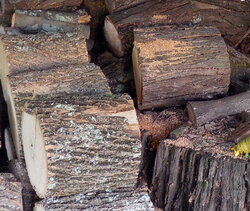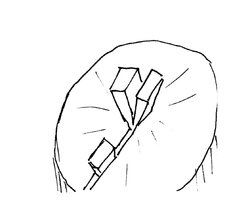[QUOTE=" I'm sure I'll figure something out, between the chainsaw, relief cuts, three sharp wedges, and a newly sharpened maul. And just maybe I'll finish the job before winter![/QUOTE]
Seeing you have quite a bit of rounds, may not be able to wedge/split them all at once, how about grabbing some unwanted pallets to elevate and tarp as many as possible, for now, and wedge/split at your leisure? Rounds I found last year were elevated and tarped for about a year, aside from some minor rain exposure, they are holding up well, and I m almost done with splitting a little at a time.
I don't have a chainsaw, but do have a pair of chaps to protect myself from the Fiskar.
As for wedge, pleasantly surprised how well this works:.
http://www.homedepot.com/p/Estwing-5-lb-Sure-Split-Wedge-E5/100351738
I start from the edge of the round like many suggested and whack with a dedicated sledge hammer. I have splitted 20+ inches green soggy maple with the set up and works really well. I use the x27 to create a notch and the wedge goes in perfectly.
In addition, for wedge with a square top, I found out aligning the body and face and strike the wedge as a diamond shape minimize chances of wedge projectile, it always go sideways instead of flying back to you.
Finally I am in my late 40s, even though I work out about 6+hours per week, can't get away w backache/soreness after a good day or splitting, doing planks is the only thing that helps speedy recovery.
My two cents.
Sent from my XT1254 using Tapatalk





